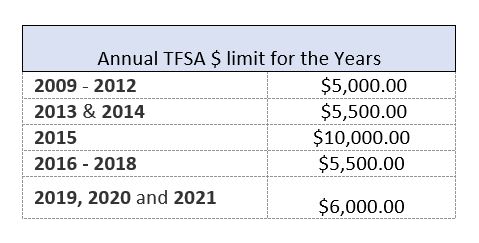Tax Free Savings Accounts – Flexible, easy and really and truly tax free
Often, our clients ask us how we can help them and their children invest in a tax effective way. There are not very many ways to do that in Canada. While many are familiar with RRSP accounts, TFSA accounts are of great benefit as well. TFSAs are only available to Canadian residents who turned 18 on or after 2009. They allow for capital gains, interest, and dividend income to be (and grow) tax free. Unlike RRSPs and many other registered accounts, TFSAs also offer flexibility. Savings in TFSAs can be used as emergency funds. Accounts are accessible, when in need, and funds can be withdrawn at anytime with no penalties. Since contributions are made with after-tax dollars, unlike an RRSP, no taxes are withheld if you choose to make a withdrawal. Every calendar year a plan owner is allowed to make a fresh contribution, currently $6,000 per year, and any unused contribution room is accumulated for use whenever funds are available.
As long-term investors, we encourage all our clients who are looking to grow their funds, to not withdraw from their TFSAs and to instead allow the tax free-growth to compound over time.
For those of you with children eligible to open a TFSA, investing through this account will be instrumental in introducing your children to investing. You should consider (them) opening a TFSA and begin to create a positive investment learning and savings experience. Maximizing TFSA contributions is preferrable for lower income earners: your children who may have just joined the workforce may find they want to start contributing to a TFSA versus an RRSP at first. Starting at age 18 can allow decades of compounded growth, and the early start can make a huge difference over that long period of time.
As with all regulated plans, it is important to not overcontribute: a 1% penalty per month will be applied to ineligible amounts. Your contributions to TFSAs may be “in kind” (transfer of securities) or in cash. “In kind” contributions, however, might have tax consequences at the time of transfer.
Clients interested in income splitting will be able to contribute up to their own TFSA maximum contribution room to their spouse’s TFSA.
Like other registered accounts, a beneficiary (ies) may be appointed for a tax-free rollover of the proceeds and future growth of inherited funds after the original owner passes away.
You can find more information on TFSAs in our FAQ on our website here.
If you still have questions on the merits of TFSAs, please call us. We will be happy to help you make the right investment decisions for you and your family.



